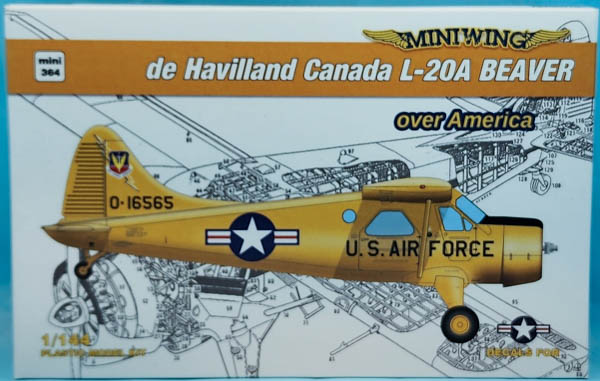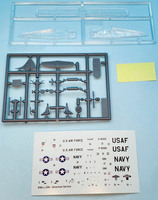
Miniwing 1/144 de Havilland Canada L-20A Beaver over America
By Matt Bittner
Overview
According to Wikipedia:
"The de Havilland Canada DHC-2 Beaver is a single-engined high-wing propeller-driven short takeoff and landing (STOL) aircraft developed and manufactured by de Havilland Canada. It has been primarily operated as a bush plane and has been used for a wide variety of utility roles, such as cargo and passenger hauling, aerial application (crop dusting and aerial topdressing), and civil aviation duties."
Miniwing has a number of DHC-2 Beaver kits they have released, as far as I can tell the only difference being the markings provided with that particular release.
The Kit
The Miniwing 1/144 de Havilland Canada L-20A Beaver consists of 24 pieces of gray, injected plastic and three pieces of clear injected plastic, consisting of the fuselage halves and the wing. Miniwing has been producing their new kits that way, ensuring no gaps when fitting any clear pieces to "colored" injected plastic. Also included in the box is a set of masks - thankfully - and decals for the following two schemes:
- L-20 I 16595 4500th Air Base Wing, 1966 (finished overall in Training Yellow)
- L-20 I 150191 U.S. Naval Test Pilot School, 1984 (finished in light gull gray with international orange panels on the fuselage and wings)
Construction of Miniwing's Beaver should go quick. Once you assemble and paint the cockpit and fuselage interior (I bet you could use the supplied masks on the inside of the fuselage prior to adding the cockpit) then the fuselage halves are glued together and the tail pieces added, along with the propeller and spinner (although those are best left until the end of construction).

|
From there you turn the model over and glue on the landing gear legs, wheels, exhaust, air scoop and pilot steps, although I would only add the landing gear legs at this time and wait until closer to the end of construction for the rest.
Finally you add the one-piece, clear injected wing, wing struts, an item on top of the wing and an air scoop on the starboard side of the nose. While I will add the wing prior to painting, I will see how the wing struts fit and probably leave those off closer to the end of constructon, along with the item on top of the wing.
Conclusion
This should be not a difficult kit to assemble and you should have a DHC-2 Beaver on your shelf in very little time. I'm looking forward to starting mine.
I definitely thank Miniwing for supplying the review kit.
